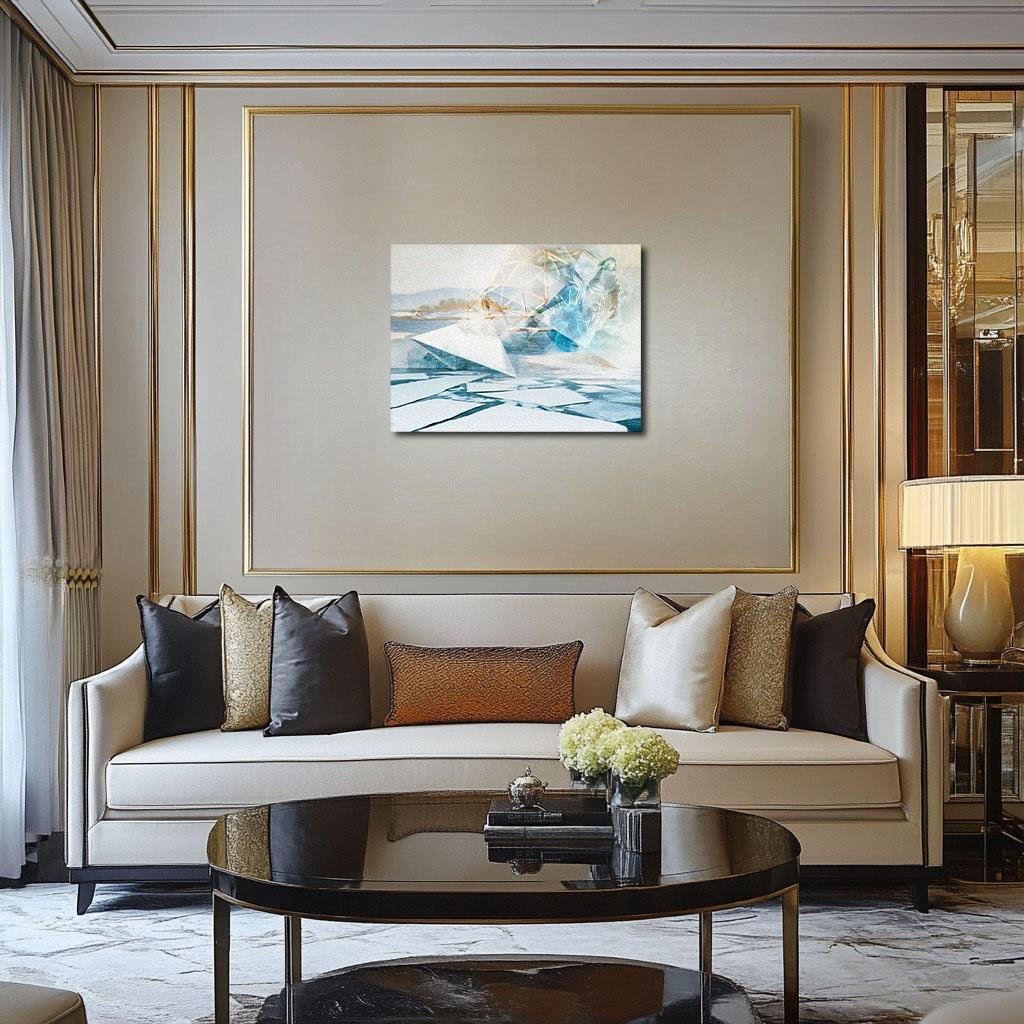Fractured Reflections: The Geometry of Ice and Light
This surreal reimagining of Monet’s The Banks of the Fjord at Christiania (1895) transforms the quiet stillness of a frozen Norwegian landscape into a fractured realm of light and time. Sharp crystalline ice shards replace the soft impressionist brushstrokes, reflecting distorted glimpses of alternate realities. A geometric structure looms above, radiating an otherworldly energy that merges with the landscape, suggesting the presence of something beyond human understanding. A ghostly figure draped in flowing energy hovers in the air, suspended between past and future, stepping through the dimensions of time itself. The interplay of Monet’s original palette with iridescent prisms creates a hypnotic glow, blurring the boundaries between nature, memory, and the unknown. This piece challenges the viewer to consider whether time is truly linear or if, like the ice, it fractures and reforms in infinite ways.
Please see Below for Details…
Hotline Order:
Mon - Fri: 07AM - 06PM
404-872-4663
Claude Monet’s The Banks of the Fjord at Christiania , painted in 1895, captures the frozen stillness of a Norwegian winter. The original artwork conveys the quiet strength of ice-covered waters, where light refracts off the snow-laden landscape in soft hues of white and blue. Monet's brushstrokes bring movement to a scene that might otherwise seem motionless, allowing the viewer to feel the crisp air and the shifting light across the frozen fjord.
In this reimagining, the serene landscape is disrupted by geometric structures, floating fragments of crystalline ice, and an ethereal figure suspended in midair. The frozen expanse, once merely a setting, becomes an arena where time fractures and space bends. The shards of ice in the foreground, originally part of Monet’s natural depiction, now appear as sharp, angular prisms, reflecting alternate dimensions within their glassy surfaces. Each piece seems to hold a fragment of time, a glimpse into different realities colliding within this frozen world.
The geometric structure in the upper portion of the composition rises like an otherworldly construct, as if the fjord itself has begun to evolve into something beyond its natural form. This structure suggests an advanced intelligence—whether natural or mechanical—integrating itself with the landscape. Light refracts through its edges, casting prismatic glows upon the icy surface below, blending Monet’s impressionist light play with a futuristic vision of space and form.
The ghostly figure emerging from the light is draped in flowing energy, seemingly in motion despite the stillness of the landscape. There is a sense of transcendence in its presence, as though it is caught between worlds, stepping through the geometric portal that distorts the frozen scene. This figure could represent time itself—fluid and boundless—moving through the static moment captured in Monet’s original work. It could also symbolize the ephemeral nature of existence, the way history, memory, and perception shift like the ice breaking upon the water’s surface.
The interplay of color in this reinterpretation heightens the surreal effect. Monet’s subdued palette of whites, pale blues, and cool grays remains, but now it is infused with iridescent prisms, creating a multidimensional glow. The frozen landscape seems to shimmer with an internal light, as if the ice itself is aware, responding to the disruption of time and space. The contrast between the soft impressionist strokes and the sharp angular intrusions of futuristic forms adds a tension that pulls the viewer between past and future, reality and abstraction.
As an artist, my intention was to explore the contrast between nature’s stillness and the vast, uncontrollable forces of time and transformation. Monet’s fjord captured a fleeting moment in the natural world, but here, that moment becomes something elastic, stretched across dimensions. The ice fractures like memory, the reflections break apart into new possibilities, and the figure floats between realms, embodying the uncertainty of existence. This piece challenges the idea of permanence—nothing is truly still, even in the coldest of landscapes. The ice will shift, the light will change, and reality itself may be just another illusion waiting to be shattered.
Add your review
Your email address will not be published. Required fields are marked *
Please login to write review!
Looks like there are no reviews yet.








